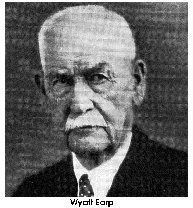Nevada (/nɪˈvædəˌ nə-ˌ -vɑː-/ ⓘ nih-VAD-ə, nə-, -VAH-, Spanish: [neˈβaða]) is a state in the Western region of the United States. It borders Oregon to the northwest, Idaho to the northeast, California to the west, Arizona to the southeast, and Utah to the east. Nevada is the 7th-most extensive, the 32nd-most populous, and the 9th-least densely populated of the U.S. states. Nearly three-quarters of Nevada's people live in Clark County, which contains the Las Vegas–Paradise metropolitan area, including three of the state's four largest incorporated cities. Nevada's capital is Carson City. Las Vegas is the largest city in the state.
Nevada is officially known as the "Silver State" because of the importance of silver to its history and economy. It is also known as the "Battle Born State" because it achieved statehood during the Civil War (the words "Battle Born" also appear on its state flag); due to the presidency of Abraham Lincoln, the Union benefited immensely from the support of newly awarded statehood by the infusion of the monetary support of nearly $400 million in silver ore generated at the time by the Comstock Lode. It is also known as the "Sagebrush State", for the native plant of the same name; and as the "Sage-hen State". The state's name means "snowy" in Spanish, referring to Nevada's small overlap with the Sierra Nevada mountain range; however, the rest of Nevada is largely desert and semi-arid, much of it within the Great Basin. Areas south of the Great Basin are within the Mojave Desert, while Lake Tahoe and the Sierra Nevada lie on the western edge. About 86% of the state's land is managed by various jurisdictions of the U.S. federal government, both civilian and military.
American Indians of the Paiute, Shoshone, and Washoe tribes inhabit what is now Nevada. The first Europeans to explore the region were Spanish. They called the region Nevada (snowy) because of the snow which covered the mountains in winter, similar to the Sierra Nevada in Spain. The area formed from mostly Alta California and part of Nuevo México's territory within the Viceroyalty of New Spain, which gained independence as Mexico in 1821. The United States annexed the area in 1848 after its victory in the Mexican–American War, and it was incorporated as part of the New Mexico and Utah Territory in 1850. The discovery of silver at the Comstock Lode in 1859 led to a population boom that became an impetus to the creation of Nevada Territory out of western Utah Territory in 1861. Nevada became the 36th state on October 31, 1864, as the second of two states added to the Union during the Civil War (the first being West Virginia).
Nevada is known for its libertarian laws. In 1940, with a population of just over 110,000 people, Nevada was by far the least-populated state, with less than half the population of the next least-populous state, Wyoming. However, legalized gambling and lenient marriage and divorce laws transformed Nevada into a major tourist destination in the 20th century. Nevada is the only U.S. state where prostitution is legal, though it is illegal in its most populated regions – Clark County (Las Vegas), Washoe County (Reno) and Carson City (which, as an independent city, is not within the boundaries of any county). The tourism industry remains Nevada's largest employer, with mining continuing as a substantial sector of the economy: Nevada is the fourth-largest producer of gold in the world. Nevada is the driest state, and over time, and influenced by climate change, droughts in Nevada have been increasing in frequency and severity, putting a further strain on Nevada's water security.
The name "Nevada" comes from the Spanish adjective nevada ([neˈβaða]), meaning "snow-covered" or "snowy". The state takes its name from the Nevada Territory, which in turn was named for the Sierra Nevada.
Indigenous history
Before the arrival of Europeans, the earliest inhabitants were Indigenous tribes including the Goshute, Southern Paiute, Mohave, and Wašišiw (Washoe people).
Statehood (1864)
Eight days before the presidential election of 1864, Nevada became the 36th state in the Union, despite lacking the minimum 60,000 residents that Congress typically required a potential state to have in order to become a state. At the time, Nevada's population was little more than 40,000. Governor Nye was frustrated that previous attempts to send the constitution via overland mail and by sea had failed by October 24, so on October 26 the full text was sent by telegraph at a cost of $4,303.27 – the most costly telegraph on file at the time for a single dispatch, equivalent to $80,516.93 in 2022. Finally, the response from Washington came on October 31, 1864: "the pain is over, the child is born, Nevada this day was admitted into the Union". Statehood was rushed to the date of October 31 to help ensure Abraham Lincoln's reelection on November 8 and post-Civil War Republican dominance in Congress, as Nevada's mining-based economy tied it to the more industrialized Union. As it turned out, however, Lincoln and the Republicans won the election handily and did not need Nevada's help.
Gambling and labor
Unregulated gambling was commonplace in the early Nevada mining towns but was outlawed in 1909 as part of a nationwide anti-gambling crusade. Because of subsequent declines in mining output and the decline of the agricultural sector during the Great Depression, Nevada again legalized gambling on March 19, 1931, with approval from the legislature. Governor Fred B. Balzar's signature enacted the most liberal divorce laws in the country and open gambling. The reforms came just eight days after the federal government presented the $49 million construction contract for Boulder Dam (now Hoover Dam).
If you want to read a whole lot more, go here: https://en.wikipedia.org/wiki/Nevada
- SERVES
- 5
- COOK TIME
- 20 Min
When you're craving something fresh-tasting and satisfying, fill your plate up with our Italian Spring Fling Pasta. This angel hair pasta dish features some great springtime flavors. One whiff of this is all it'll take to get your family to the dinner table.
- 1/3 cup olive oil
- 1 cup chopped onion
- 5 large tomatoes, cut into 1-inch chunks
- 4 cloves garlic, minced
- 1/2 teaspoon salt
- 1/4 teaspoon black pepper
- 1 (14-ounce) can artichoke hearts, drained, cut in half
- 1 (2.5-ounce) can sliced black olives, drained
- 1/4 cup sliced fresh basil
- 1 pound angel hair pasta
- In a large skillet over medium-high heat, heat oil; cook onion 5 minutes. Add tomatoes, garlic, salt, and pepper and cook 8 to 10 minutes, or until tomatoes are broken down, stirring occasionally. Add artichokes, olives, and basil and cook 3 to 5 minutes, or until heated through.
- Meanwhile, in a large pot of boiling water, cook pasta 4 to 5 minutes, or until tender; drain. Place pasta on large platter, top with tomato mixture, and serve.
And births this date include...

1955 – Bruce Willis, American actor
Every March 19th, National Certified Nurses Day celebrates the certified nurses who impact lives every day.
Certified nurses dedicate their entire careers to helping others and often work long, hard hours. The day honors and recognizes them and their significant achievements. Their advanced skills require continuing education, re-certification, and continued knowledge of ever-changing technology. Certified nurses balance clinical needs and patient care. Helping patients meet their healthcare goals in complex and challenging times makes a Certified Nurse’s commitment even more valuable.
A nursing career is as varied as a doctor’s. They specialize and can earn certifications in specialties and sub-specialties. Certified nurses study and take certification exams to demonstrate their competency, skill, and knowledge in a field. Board certification is available in a variety of fields including:
- Ambulatory Care Certification
- Clinical Nurse Specialist Certification
- Informatics Certification
- Medical-Surgical Certification
- Nurse Practitioner Specialty Certification
- Pediatric Nursing Certification
- Psychiatric Nursing Certification
Nurses can also obtain sub-specialty certifications. Certified nurses provide skilled experience in the medical fields where they work. They also improve the quality of the health care provided. Now, more than ever, health care needs more qualified nurses providing the care that we need.
HOW TO OBSERVE
Thank a certified nurse, and all they do. If you know someone who is striving to become a certified nurse, encourage them in their endeavors. Encourage certified nurses to attend job fairs to share their experiences and inspire others to become certified nurses. Consider taking a certification you’ve had your eye on. Learn more about the certification process. Speak to other certified nurses.
NATIONAL CERTIFIED NURSES DAY HISTORY
National Certified Nurses Day was established on March 19th in honor of Margretta (Gretta) Madden Styles (March 19, 1930 – November 20, 2005), MSN, Ph.D. Her pioneering and distinguished career inspired nurses around the country. She was recognized worldwide for her leadership and contributions to the study and practice of nursing.













No comments:
Post a Comment